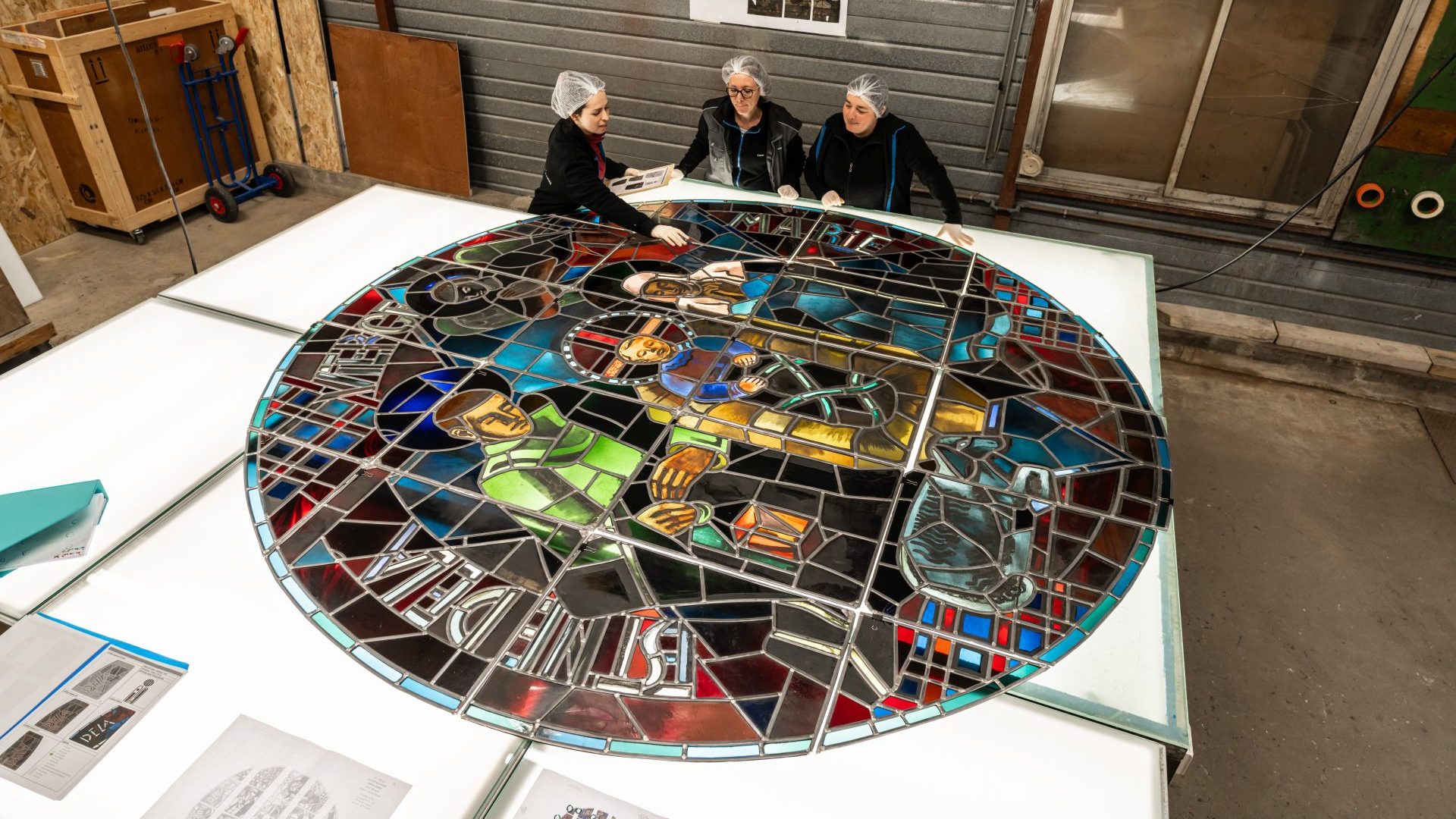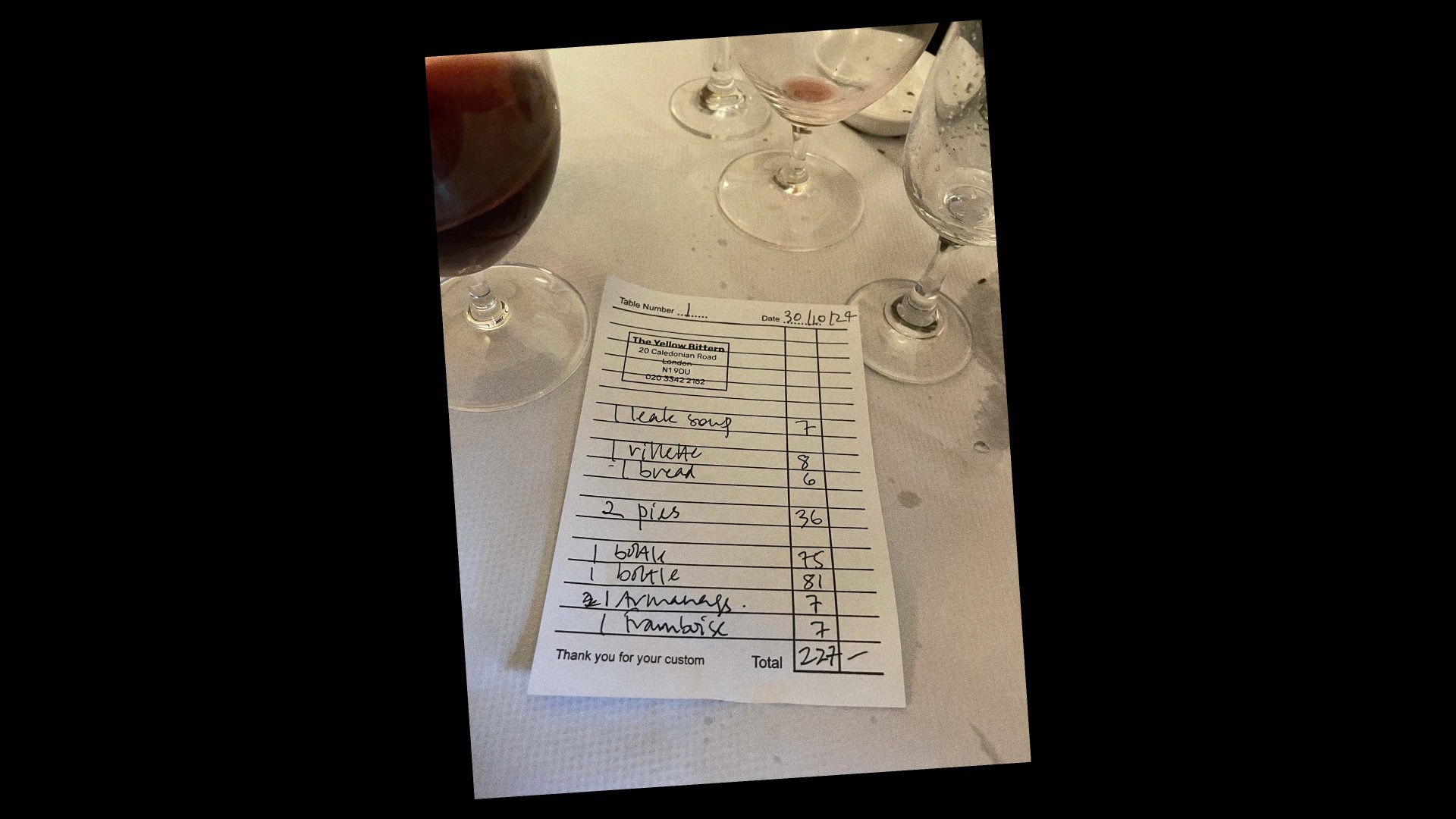“To love is to act,” asserted the great 19th-century writer Victor Hugo. His novel Notre-Dame de Paris (translated as The Hunchback of Notre-Dame) is considered an act of love for one of France’s most important Gothic cathedrals, altered over the centuries and fallen into a crumbling state of disrepair by the time he sat down to write it.
In one chapter, Hugo laments the removal of Notre-Dame’s medieval stained glass: “And who put the cold white panes in the place of those windows ‘high in colour’ which caused the astonished eyes of our fathers to hesitate between the rose of the grand portal and the arches of the apse?”
Almost 200 years later, and 87 miles south-east of Paris in the commune of Troyes, an exhibition of 1930s stained-glass windows intended for the cathedral of Notre-Dame is currently on display at the Stained-Glass Heritage Centre. The curator, Julia Boyon, begins her tour by referencing Hugo’s novel. “To understand this exhibition of works from 1930-35, we have to go back to 1831 when Victor Hugo published his famous Notre-Dame de Paris.”
We are told that the removal of medieval stained glass from churches was not uncommon in the 1750s. “Colourful stained glass made the interiors extremely dazzling but also darker, and very soon the musicians and church officiates complained of the lack of light.”
Consequently, by 1756 many of Notre-Dame’s 13th-century stained-glass windows were replaced with uncoloured glass, with the exception of the rose window of the west facade and those in the arms of the transept, which to this day retain their medieval grandeur.
Following Hugo’s rallying cry to save Notre-Dame, architects Jean-Baptiste Lassus and Eugène Emmanuel Viollet-le-Duc were charged with overseeing the Grande Dame’s facelift, which naturally included the windows. Viollet-le-Duc adopted an archaeological approach, researching what the 13th-century originals may have looked like, and taking inspiration from those at the cathedrals of Bourges and Chartres, then commissioning master glassmakers to carry out the work.
The result was the reinstatement of coloured glass for the large figures in the upper choir and the narrative windows in some of the chapels, combined with grisaille (two-toned glass featuring geometric patterns) for the rest, to allow a shadowy penumbra to persist. Completed in 1864, the restoration was criticised for being historically and aesthetically unsatisfactory.
The exhibition in Troyes, Notre-Dame de Paris: the quarrel of the stained-glass windows, illustrates how the same arguments swirled around proposals for renewal in the 1930s, when Viollet-le-Duc’s work was to be swept away by more vibrantly modern offerings.
In the interwar years, attitudes towards the use of contemporary art in ecclesiastical buildings began to shift. Maurice Denis and George Desvallières had set up the Ateliers d’Art Sacré in Paris in 1919, which sought to refresh the spirit of Christian art, freeing it from stifling academicism.
“You have this desire to pay homage and to respect the colours of the medieval cathedral, but there’s also the idea that each century bestows something on the building, that the monument isn’t frozen but alive, that it benefits from the centuries that follow,” says Boyon.
It was in this context that 12 master glassmakers from Paris, led by Louis Barillet, approached the Historic Monuments Commission to propose that the windows they were creating for the papal pavilion in the International Exhibition of 1937 might also replace Viollet-le-Duc’s grisaille windows in Notre-Dame’s nave. The idea gained traction and the inspector general of the Historic Monuments Commission, Eugène Rattier, alongside Cardinal Verdier, were engaged to manage the project and suggest its iconography: each master glassmaker was asked to design a pair of lancet windows with a rose.
For the lancets, they had to choose a pair of saints, but not solely those associated with the capital, such as St Geneviève or St Louis, but also saints to represent the regions, promoting the notion that Notre-Dame de Paris was also Notre-Dame de France.
The 12 thus began their designs and maquettes. They were: Louis Barillet, Valentine Reyre (the only woman of the group), Jean Hébert-Stevens, Le Père Marie-Alain Couturier, André Rinuy, Paul Louzier, Joseph-Jean-Kef Ray, Louis Mazetier, Jean Gaudin, Max Ingrand, Jacques Grüber and Jacques Le Chevallier.
“It was a little inevitable that each master glassmaker concentrated on their own visual elements and their own artistic vision, which effectively risked a lack of cohesion and might even be regarded as a cacophony,” Boyon tells us.
Certainly, there were variations in types of glass, lead and brushwork used. When the designs became public, passionate arguments ensued between the traditionalists and the modernists, crystallising around one central issue: How could – and should – contemporary artworks be inserted into a historic architecture?
Newspaper headlines reflected the opposing viewpoints: “All this sounds like a dreadful cacophony… like a jazz band led by a drunk musician,” opined Achille Carlier in the Pierres de France, while in Le Figaro Cardinal Verdier declared: “A cathedral, especially when it is a national sanctuary as this one is in Paris, is neither a tomb nor a museum.”
While the completed windows replaced Viollet-le-Duc’s in the nave of Notre-Dame in 1938, the second world war put a stop to their becoming a permanent fixture. A year later, they were taken down and packed away inside the cathedral.
Some windows were retrieved by the artists, but a number were subsequently lost when their studios were dismantled. Five never collected their work, which remained in the cathedral, coming to light decades later in the clear-up following the 2019 fire.
After the war, only one of the 12 master glassmakers succeeded in securing a permanent place in the cathedral and this was Le Chevallier. Yet it was not his figurative 1930s windows that were installed in 1965, but a series of new abstract linear compositions in blue. Times and tastes had changed.
The 18th-century chapel in Troyes is an awkward space to exhibit these very large, modernist stained-glass windows, and if they are to remain museum objects it would enhance their beauty if they were installed in a purpose-built structure. There are two works by Le Chevallier that are only legible when the sun shines at a particular angle, lighting up their startling hues, before letting them slip quietly back into leaden darkness.
Le Chevallier’s Creed Rose window is a vast medallion of active colour, concentrated in the attributes of the four evangelists: an angel, lion, bull and eagle. They circle the sacred lamb of God, the Agnus Dei, here depicted with a crimson halo and – unusually – a pink dagger in its chest, out of which appears a wedge of blood caught in a bowl.
Having an opportunity to see this at close proximity allows the viewer to appreciate the almost expressionist execution of the subject in its stylised angular shapes, accentuated by bold rough brushstrokes painted on the glass segments in iron oxides.
Louzier is represented by a panel depicting the head of St François de Sales. As yet uncleaned, it is nevertheless striking with its green face and bright orange beard. “With Paul Louzier, we realised that he deliberately used varying widths and thicknesses of lead, and that this was a characteristic of the artist,” explains Boyon.
Controversy continues to pour through the windows of Notre-Dame, even into the 21st century. President Macron’s much-derided decision to invite contemporary artists to submit designs to replace Viollet-le-Duc’s grisailles in the cathedral’s six south-side chapels has brought a new edge to the exhibition in Troyes, and more headlines in the press, accusing the initiative of flouting the opinion of the National Commission for Heritage and Architecture and the regulations of the 1964 Venice Charter. Last year La Tribune d’Art magazine organised a petition opposing the idea, which was signed by more than 200,000 people.
“What sense does it make to restore the cathedral to its last known historical state (before April 15, 2019) only to deprive the building of an essential element that Viollet-le-Duc wanted?” argued the open letter.
Perhaps a degree of drama is proof of how strong the affection is for La Grande Dame de Paris, whose ongoing restoration inspired a percussive performance on its scaffolding during the opening of the Olympic Games. The cathedral is due to have its own opening ceremony on December 8, 2024. Meanwhile, the quarrel over its stained-glass windows rumbles on.
Notre-Dame de Paris: La querelle des vitraux 1935-1965 continues at Cité du Vitrail, Troyes until March 9, 2025




